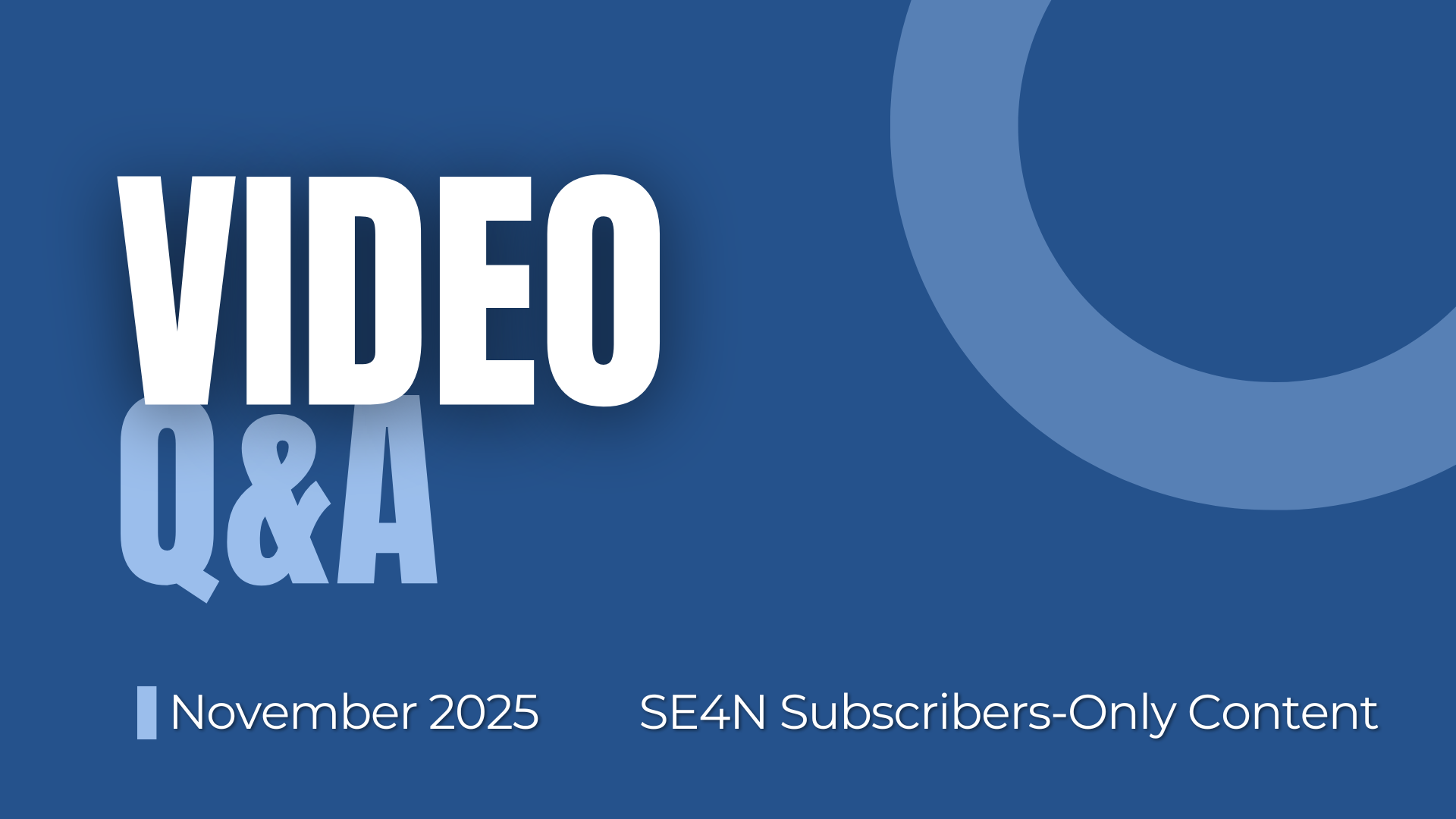
Enhancing Nonprofit Sustainability Through Fiscal, Financial, Legal, and Governance Education.
Sustainability Education 4 Nonprofits (SE4N) is an education website with 100% human-created content, written by experienced nonprofit professionals.
TRENDING ISSUE, NOVEMBER 2025:
Sign Up to Download SE4N's
Nonprofit Financial and Legal Compliance Basics Checklist
SE4N's A. Michael Gellman (CPA, CGMA) and Benjamin Takis (JD) jointly authored this detailed checklist to cover the essential basics of financial and legal compliance that should be part of any nonprofit organization’s sustainability planning and risk management process, including Conflicts of Interest, Internal Controls and Risk Assessment, Employment and Human Resources, Financial Reporting and Audits, Government Grants, Governance and Corporate Records, and other Key Risk Management Areas.
AFTER SIGNING UP, PLEASE CHECK YOUR EMAIL FOR A CONFIRMATION LINK.
Thank You!
PLEASE CHECK YOUR INBOX TO CONFIRM YOUR SIGN-UP AND DOWNLOAD THE CHECKLIST.
IF YOU DO NOT SEE THE CONFIRMATION EMAIL, MAKE SURE TO LOOK IN YOUR SPAM FOLDER.
Feel free to contact us if there are any issues.
It is relatively common knowledge that dissolving a nonprofit organization is one of the most difficult decisions a Board of Directors may have to make. However, many people underestimate the careful planning, attention to detail, and commitment that is required to properly shut down and dissolve an organization. This process should start well before the filing of “Articles of Dissolution” and often continues in a post-dissolution “wind-up” period that can last for months or years.
The markers for tracking and assessing a nonprofit organization’s financial health are not a mystery. The key elements of financial health (operating reserves, funding, and operational expenses) are generally easy to identify and understand. You just need a willingness to keep your eyes open and a commitment to pause and make an honest assessment of a financial picture that has most likely been changing.
I often receive inquiries from entrepreneurs who are looking to add a philanthropic component to an existing for-profit business, such as by forming a nonprofit as a charitable arm or subsidiary of their business or starting a corporate foundation. These ideas are usually well-intentioned. However, mixing business and charitable activities too closely can make IRS approval of 501(c)(3) status an uphill battle.
Difficult budget issues can often arise quickly and unexpectedly. To maintain a high level of trust with your nonprofit organization’s Board and remain transparent, collaborative, and inclusive, be sure to communicate in a timely and thoughtful manner.
Most Recent Posts
Ben and Mike answer questions from subscribers about best practices in structuring and approving executive bonuses, updating cost allocation methods and the importance of time sheets, cash management for organizations with healthy operating reserves, and managing the costs of insurance.
This template provides a framework for drafting unanimous written consent resolutions in lieu of a Board of Directors meeting. This template is intended for situations in which Board action on a matter is necessary, and taking action through unanimous written approval would be more timely, practical, and/or feasible than waiting until the Board meeting is convened.
Nonprofit organizations rely heavily on their finance department staff. Their services are critical to day-to-day operations and essential to safeguarding and stewarding the allocation of financial assets to meet the mission of the organization. Investing in improving and increasing finance department staff skills, capacity, and professional development are actions that “speak louder than words,” and will improve operations and performance while demonstrating a culture of staff appreciation.
This template provides a standard set of minutes for the first Board of Directors meeting of a newly formed nonprofit organization. This sample document covers key details such as the date, time, and location of the meeting (or, if remote, the platform used), attendance by Board members and other persons, the approval of first-meeting resolutions, and other matters discussed at the meeting.
Ben and Mike answer questions from subscribers about converting from 501(c)(4) to 501(c)(3) status, communicating the financial condition of an organization with significant restricted funds on the balance sheet, how much unrelated business income tax (UBIT) is too much, and considerations when opening a bank account in a foreign country outside of the United States.
Ben and Mike discuss the private benefit rule that applies to 501(c)(3) organizations, addressing how the private benefit rule is broader than the private inurement and excess benefit transaction rules, examples of how the private benefit rule applies to specific programs, how to assess whether private benefit is "incidental,” and more.
As with many employment policies, enforcing the terms of a sabbatical policy can raise difficult issues and should always be approached with caution and applied uniformly. Potential disciplinary options for employees who don’t comply can include warnings, suspension, or termination. Repayment (i.e. “clawback”) of paid leave and/or forfeiture of other benefits could also be possible if clearly set forth in the organization’s policies. However, going forward you may wish to consider changes to make your sabbatical policy more flexible and easier to administer.
Ben and Mike answer questions from subscribers about adding an Immediate Past President position, Board giving requirements, when related organizations must have consolidated audits, and preparing to receive restricted funds and comply with restrictions by donors and grantors.





![TEMPLATE: Unanimous Consent Resolution of Nonprofit Board [SUBSCRIBERS-ONLY]](https://images.squarespace-cdn.com/content/v1/5e6ccadfb4659c1d51df14d5/bb6388c1-e38c-4fef-a5f3-48bb76a6a5a7/pexels-eva-bronzini-8058548.jpg)

![TEMPLATE: Minutes for First Meeting of Nonprofit Board [SUBSCRIBERS-ONLY]](https://images.squarespace-cdn.com/content/v1/5e6ccadfb4659c1d51df14d5/63bc051d-b30f-4e84-bde3-14cf8c474b47/pexels-towfiqu-barbhuiya-3440682-14426300.jpg)



